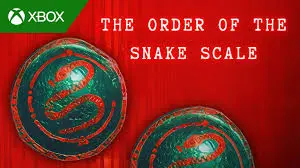I have a weakness for the Elder Scrolls series.
Ten years ago, my husband and I returned plunked down far too much of our wedding-present cash for what was then a state-of-the-art desktop, and that year's hot new game: The Elder Scrolls: Daggerfall. I was between jobs, and he had a break from grad school, so we devoted ourselves full-time to killing necromancers and acquiring Daedric armor. The deedling of the game's background music haunted our dreams. We stopped answering the phone. We forgot to eat.
After a couple weeks, we discovered that winning was impossible – the game was shipped with a fatal bug in the final quest. We downloaded the patch, and our friends started planning an intervention. Finally, the academic year started up again, and I found a job, and that was the end of that.
Those of our friends who remember the Daggerfall Problem (ours, not the game's) eye us suspiciously whenever a new Elder Scrolls title comes out. "You're not going to do…that… again, are you?"
I didn't do it again with the next Elder Scrolls title, Morrowind. Visually, the world was certainly an improvement over Daggerfall's two-dimensional, pixilated landscape. But it was an alien world, full of huts shaped like Scream masks and herds of grazing tyrannosaur-shaped Guar. To move across that strange landscape, you needed a complex itinerary divided between boats, foot travel, and a kind of bus made from a giant bug. The main quest's conclusion was particularly difficult, requiring hours of play in a relentlessly ashy, blighted landscape under lava-red sky, accompanied by ambient howling-wind noises that made me turn my speakers off.
The preview screen shots for the latest Elder Scrolls title, Oblivion, were enticing, full of nearly photo-realistic thatched cottages, and there wasn't a tyrannosaur in sight. I was a little wary, because the game looked so ambitious and sprawling that there'd be lots of room for bugs. I also worried that it might be too good; could it have the power to drop a suburban working mom into an abyss of sleepless irresponsible geekery?
I took the risk. I bought Oblivion, programmed the pizza delivery number into the speed dial, taught my daughter to run the dishwasher, and sat down to play.
Following a video card upgrade (the game flat-out refused to launch under my aging GeForce FX 5200 card) I was good to go. The game's autodetection software set the graphics options to "Medium Quality," which was breathtakingly good. The initial title sequence is a broad sweep of images drawn from across the entire game, culminating in an aerial view of the Imperial City, a giant wheel of white marble set among lush green gardens. The sequence reminded me of a movie trailer, and the game looked like a movie – one I wanted to see.
Your character starts out in prison, with nothing but the shirt on his back; you don't even start with a character class or statistics (those come later.) You do get to choose your race and your face at this stage, though, through a rather confusing interface. (To open the window that lets you choose your gender, click the "Name" field. Huh?) You also have astonishingly fine control over your character's facial features; you can spend a lot of time tweaking your physiognomy if you want to build a perfect self portrait, say.
Once you have a face, there's not much to do in the cell. There are some chains dangling from the walls, and some furniture, which you can bump or kick or walk into just to demonstrate the game's amazing physics engine. After a few minutes, the Emperor's bodyguards enter. Seems as if someone's trying to kill the Emperor, whose only way out is a secret escape passage concealed in the wall of your cell.
Which brings us to my first observation: The NPCs talk to you. In Daggerfall, the dialogue was all text; in Morrowind, the NPCs greeted you aloud, but real conversation was carried on through text boxes. In Oblivion, however, every line uttered by any NPC is spoken aloud, synched with the movement of their animated lips. (They'll even call you "sir" or "ma'am," appropriately.) To converse, you choose a topic from a list, and the NPC tells you what he knows. Because of the high cost of developing each line of dialogue, the list often has only one choice at a time. That was a bit too linear for me, not enough like playing a role.
Moving on, you follow the Emperor's men into the secret passage, where you receive your initial quest. It turns out that the Emperor has dreamt of your meeting. He knows his time to die has come, and his last words send you on a quest to find his lost heir and save the Empire. At this point, the tutorial begins. You travel through sewers and cellars, killing rats and picking up bits and pieces — weapons, lockpicks, food, and a few gold coins. Your spellbook, by default, includes a couple of useful spells (Cure Minor Wounds and a limited fireball that can kill a rat in a couple zaps.)
The game records your play choices in the tutorial dungeon: do you favor sneaking past enemies (using a Hide system that players of the Thief series will recognize), casting spells, or fighting – and what weapons do you choose? Halfway through the tutorial, the game suggests a class for you based on the play style you've chosen. It's like getting the results to one of those Quizilla thingies – "What Character Class Are You?"- without having to take the quiz. If you're new to the Elder Scrolls or to role-playing games in general, this is a delightful feature. If you're an expert, you can use this screen to pick the class you know you want, or to generate your own custom class.
Once you're through the tutorial, you're turned loose in Cyrodiil, armed with whatever you picked up underground and the knowledge of your vital mission. You can explore, pick up side quests, and take the main quest at your own pace, or you can throw yourself into the main quest early on. Theoretically, your opponents throughout the main quest are adjusted to always provide a challenge for you, no matter what level you've achieved. I found the initial steps of the main quest fairly easy at low levels (around 5 or 6), but the difficulty seemed to rise disproportionately as my level increased. Finally, I noticed that my laundry was piling up, so I turned down the difficulty slider.
A note on the Difficulty Slider: it is a Very Good Thing. It makes it possible for a single game to be, if not all things to all people, at least most things to almost everybody. If you want the chance to solve some interesting puzzles and explore the gorgeous landscapes, but you look at combat as a necessary nuisance, you can turn the difficulty slider way, way, down. If you want bragging rights, and enjoy reloading your saved games, crank it up to the maximum and see how many rat bites it takes to kill a tenth-level character. (It's less than you'd think.)
The environment is cool enough that my battle-hardened warrior frequently visited the countryside to hunt deer and pick wildflowers; the alchemy mechanic is powerful enough for that to be rewarding. In addition, each of the cities has a few fascinating side quests available to any characters, and the various guilds and factions hand out even more. Many of the side quests have unexpected twists; there aren't too many of the dull courier runs that plagued earlier Elder Scrolls games. Although there are some quests that can be resolved by talking and sneaking around in town, over half of the ones I've taken on have led me into a dungeon of some kind.
Dungeon crawling ain't what it used to be, for which I am eternally grateful. While there are some puzzles, they mostly involve hidden switches, levers, buttons, or keys, rather than mazes of twisty little passageways. The quest map indicator is actually useful, pointing you in the rough direction of your goal, so you don't spend a lot of play time being lost. The longest dungeons have a hidden exit near your goal, so you don't have to backtrack after your mission is accomplished.
With the exception of Elvish ruins, dungeons are dark. In some places, they're cave-dark – more like what's-wrong-with-my-monitor dark, if you don't have a torch or a Light spell. I'm thinking they did this on purpose, because the play of torchlight on the walls is one of the best subtle visual effects in the game. I wish, though, that they'd toned down the darkness in more civilized interiors; in a city shop at high noon, you shouldn't need torchlight to find the proprietor.
When you finally get around to it, the main quest feels surprisingly straightforward. The first significant part of the main quest involves a journey to the town of Kvatch to rescue the Emperor's lost heir. However, Kvatch is the site of a fiery portal that leads to the nightmarish otherworld of Oblivion. Your first task is to leap through the portal, fight your way through hordes of enemies, and close the portal behind you.
The land of Oblivion is visually hellish – black and red, heavy on bubbling lava (or is that boiling blood?) thorns, claws, and bones. The contrast with the idyllic scenery of Cyrodiil couldn't be stronger; even though I know it's only a game, I want to protect the thatched cottages and mountain lions from the dangers that come through that portal. If I'd taken time between the multiple Oblivion Gate quests to do some side-questing, I'd be completely satisfied. However, I believed the NPC who told me that time was of the essence, and I ended up replicating my Morrowind experience: way too much time in a gray and red world with the speakers off
The T rating seems appropriate; there's some zombie-and-skeleton gore, and some human bandits and assassins who'll force even the most noble character to kill in self-defense, but it's no Grand Theft Auto. I'd buy it for a high-schooler in a heartbeat, although probably not for anybody much younger than that
If bugs and frustration marred your experience with earlier Elder Scrolls titles, go ahead and try Oblivion; the glitches seem to be minimal, the new system for tracking quests minimizes confusion, and the interface is easy to handle. It's so easy to handle that I'd recommend it to those new to role-playing games in general – although such players might want a hint book to help them out. If you're a fan of other roleplaying games but don't know the Elder Scrolls series, there's no reason you can't start here; there's plenty to explore and enjoy.
Just remember to eat.
The Scores:
Gameplay- 9 The world is vast, and sprawling, and totally open-ended. Developer Bethesda Softworks wisely chose to not fix what wasn't broken from earlier Elder Scrolls titles; they incorporated the best of the earlier games (Fast Travel, horses, and walled cities from Daggerfall, straightforward and varied dungeons from Morrowind). The main quest, while engaging, does feel a bit short, but the world's incredible depth mitigates that quite well.
Graphics- 10 Oblivion's world of Cyrodiil is breathtakingly lovely, even when run under a mid-range video card; I'm jealous of gamers whose PCs meet the Recommended system specs (which call for some serious hardware.) The physics engine was so believable and realistic that, paradoxically, I hardly noticed it; of course cups fall when you jump onto the table!
Sound- 9 I'll admit that I didn't play much with the background music on; the creepy dungeon-delving themes really bothered my five-year-old. The ambient sound is so wonderful that I once mistook real birds outside my window for one of the game's sound effects. The music (what I heard of it) fit the setting well enough, varying from location to location so completely that I never ended up with something deedling in my head.
Value- 9 I feel as if I got my money's worth and then some; I've played over a hundred hours, and haven't finished the main quest yet. There are also some new possibilities that could be generated by the active mod community. (For example, the presence of pelts, gold nuggets, calipers, yarn and shears among the available items suggests the possibility of crafting skills in later expansions, but those don't exist in this release.).
Curve- 8 It seems that much of the creativity in this game is visual. The storyline is solid, but not that much different from its predecessors. It's mechanically wonderful, visually awesome, and not terribly innovative in plot. If you're new to the Elder Scrolls or RPGs, by all means, jump in here. If you're an Elder Scrolls veteran, Oblivion is a gorgeous retelling of an old, familiar tale. If you share my love for rereading favorite books or seeing favorite movies again and again, Oblivion will bring back fond memories of Daggerfall and Morrowind (unless your favorite parts were the long mazes and the bug bus.)
President & CEO














Leave a Reply